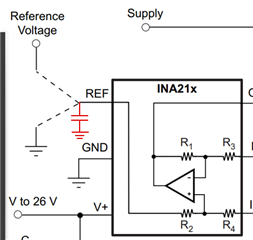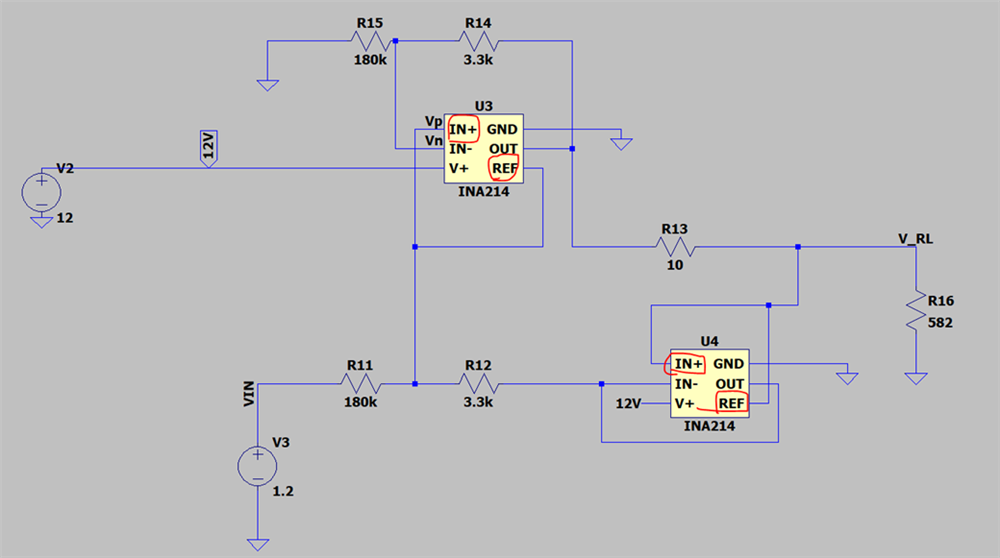Hi Team
Let me ask about treatment of REF pin.
Could we open or connect to GND throgh the cpacitor about REF Pin show in below figure?

best regards
TATSU
This thread has been locked.
If you have a related question, please click the "Ask a related question" button in the top right corner. The newly created question will be automatically linked to this question.
Hi Team
Let me ask about treatment of REF pin.
Could we open or connect to GND throgh the cpacitor about REF Pin show in below figure?

best regards
TATSU
Hi Ladish
Thank you for your response.
In case of using capacitor, if use capacitor which connecting to GND like following picture, not acceptable?

best regards
TATSU
TATSU,
As Ladish said, the REF pin will not be held to a known fixed voltage if you just connect a capacitor to it, and so the INA214 will not produce a useful output voltage. You are essentially floating the REF pin with a charge bucket here, and the voltage at the REF pin will be largely dependent on what currents flow into the capacitor from the device.
Let me know if you have any more questions,
Levi DeVries
H iDavis
Is it fine for INA214 to connect the REF pin to IN+ like following picture?
*The voltage input to IN+ pin will be a fluctuating voltage.

best regards
TATSU
Hello,
The device will operate normally with the ref pin connected as in your schematic. Please note that the output voltage should be kept within the linear range for the device. If the output voltage is driven too high or too low the device will "rail" and the amplifier will become saturated, after which it will require some time to recover.
It appears to me as though you are using these devices like op amps, may I ask why you don't simply use a dual op amp for your application?
Given the circuit you presented I calculate an approximate gain of 1.056, about 5% above unity.
Let me know if I can be of any more assistance,
Levi DeVries